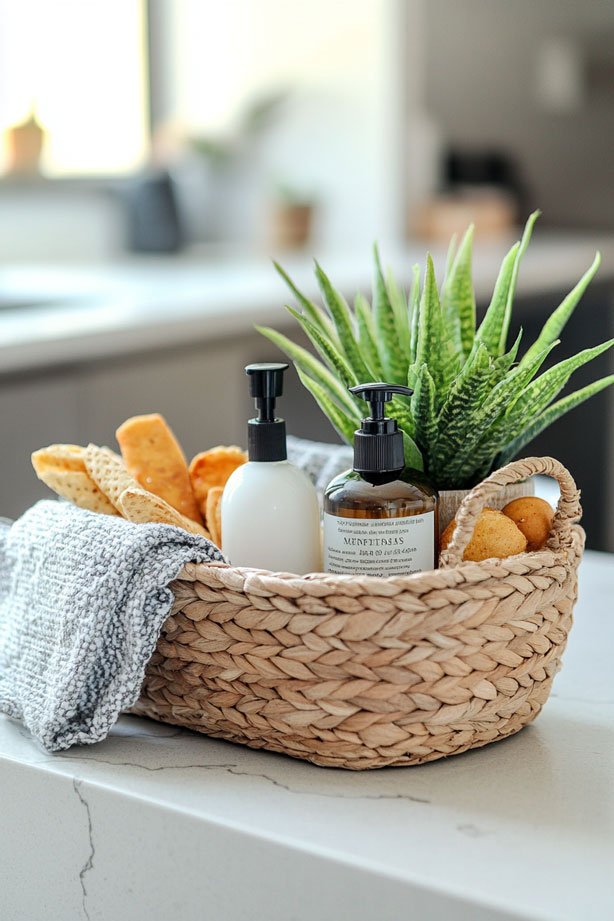
Pothos, specifically Epipremnum aureum and its popular variety, Golden Pothos, are among the most beloved houseplants. Known for their heart-shaped leaves and resilient nature, they make excellent indoor companions. In this guide, we’ll provide you with essential tips and techniques to ensure your pothos thrives, from watering and fertilizing to propagating and troubleshooting common problems.
What is the Best Way to Care for a Pothos Plant?
How to Water Your Pothos Properly?
Watering your pothos plant correctly is crucial for its growth and health. It’s essential to allow the soil to dry out between waterings, as overwatering can lead to root rot. During the growing season of spring and summer, you might need to water more frequently, while in winter, when the plant is dormant, less frequent waterings are advisable. Always check the top inch of the soil; if it’s dry, it’s time to water. Remember, the pothos loves a good soak, but ensure excess water can escape through the drainage hole of the pot.
Moreover, how you water your pothos can significantly impact its overall health. When watering, it’s beneficial to use room-temperature water to avoid shocking the roots. Additionally, using a watering can with a spout can help you direct the water straight to the soil, preventing any splashes on the leaves, which can lead to fungal issues. Observing your plant’s response to your watering routine is vital; if you notice yellow leaves or wilting, it may be a sign of overwatering or underwatering. Balancing these factors will help your pothos thrive.
What Soil is Best for Golden Pothos?
The right potting mix is fundamental for the health of your Golden Pothos. A well-draining potting mix is ideal, as it provides the balance of moisture and air that the plant needs. A blend of peat moss, perlite, and pine bark works well, ensuring that the roots have the necessary aeration. Avoid heavy soils that retain too much moisture, as they can lead to root rot, a common issue for this vine. Additionally, consider using a mix formulated for indoor plants, as it typically contains the right nutrients for optimal growth.
Furthermore, the soil you choose can affect the plant’s growth and resilience. Golden Pothos plants can benefit from a slightly acidic to neutral pH level, ideally between 6.0 and 7.0. You might also consider mixing in some organic compost to boost nutrient content. This way, your pothos won’t just survive; it will flourish, producing lush foliage and vigorous new growth. Regularly checking the moisture level of your soil can help you determine when to repot or refresh the mix, ensuring your pothos remains healthy and vibrant.
How Often Should You Fertilize Epipremnum Aureum?
Fertilizing your Epipremnum aureum is essential to encourage new growth and maintain its vibrant variegated leaves. During the growing season, typically spring and summer, you should fertilize your pothos every 4 to 6 weeks using a balanced liquid fertilizer. It’s best to dilute the fertilizer to half strength to avoid over-fertilizing, which can harm the plant. In the fall and winter months, you can reduce or stop fertilizing altogether, as the plant enters a dormant phase.
Moreover, the choice of fertilizer can influence the health of your pothos. Using a fertilizer high in nitrogen can promote lush, green foliage, while one balanced in phosphorus can enhance root development and flowering potential, although flowering is rare in indoor conditions. Be attentive to your plant’s response to fertilization; if you observe changes in leaf color or growth patterns, adjust the frequency or type of fertilizer accordingly. By providing the right nutrients, you will ensure your pothos plant remains a beautiful centerpiece in your indoor space.
How to Propagate a Pothos Plant?
What are the Best Methods to Propagate Golden Pothos?
Propagation of Golden Pothos can be a rewarding experience, allowing you to create new plants from cuttings. One of the most effective methods is to take stem cuttings that are at least 4 to 6 inches long, ensuring they have a few leaves and at least one aerial root. Place the cuttings in a jar of water, ensuring the leaves do not submerge, as this can lead to rot. Within a few weeks, you should see roots forming, at which point you can transfer them to a pot with suitable soil.
Alternatively, you can propagate Golden Pothos directly in soil. Simply plant the cutting in a potting mix, water it lightly, and cover it with a plastic bag to maintain humidity. This method often yields quicker results in terms of root development. Regardless of your method, patience is key, as roots can take time to establish. With proper care and a little time, you’ll have new pothos plants to share or expand your collection, showcasing the beauty of this versatile houseplant.
Can You Root Pothos Cuttings in Water?
Yes, rooting pothos cuttings in water is a popular and effective method of propagation. This technique allows you to visually monitor the root development, which can be both exciting and rewarding. To begin, take healthy cuttings from the parent plant, ensuring they are about 4 to 6 inches long and contain several leaves. Place the cuttings in a clear container filled with water, ensuring that the nodes are submerged while the leaves remain above the waterline. Change the water every few days to keep it fresh and prevent any bacterial growth.
As the roots begin to grow, typically within 2 to 4 weeks, you’ll notice new growth, indicating a healthy cutting. Once the roots reach about 2 to 3 inches long, you can transplant them into a pot with a suitable potting mix. This method not only provides a high success rate but also allows you to enjoy the aesthetic appeal of the roots growing in water. With proper care and attention, you will soon have thriving new pothos plants ready to enhance your indoor space.
How to Ensure Successful Propagation of Pothos?
To ensure successful propagation of your pothos, start with healthy cuttings from a mature plant. Choose stems that are free from pests and diseases, as these can hinder growth and development. Always use clean, sharp scissors or shears to prevent any damage to the plant. After taking your cuttings, it’s beneficial to let them sit for a few hours to form a callus over the cut ends, which can help prevent rot when placed in water or soil.
Additionally, maintaining the right environmental conditions is crucial for successful propagation. Pothos cuttings thrive in warm, humid environments, so placing them in indirect light will promote growth without the risk of scorching the leaves. If propagating in water, ensure the container has enough depth for the roots to develop freely without crowding. Regularly check for any signs of rot or distress, and with patience and care, your cuttings will soon become robust plants, ready to thrive in their own pots.
How to Prune and Repot Your Pothos?
When is the Best Time to Prune a Pothos Plant?
The best time to prune your pothos plant is during its active growing season, typically in spring and summer. Pruning during this time encourages new growth and helps maintain a healthy, bushy appearance. Regular pruning promotes fuller plants and can prevent them from becoming leggy, which is common if left unattended. Aim to remove any dead or yellowing leaves, as well as stems that have become overly long or sparse, to encourage a more compact shape.
Moreover, pruning can also be beneficial for the overall health of the plant. By removing unhealthy or damaged foliage, you allow the plant to redirect its energy toward new growth. Consider using clean, sharp pruning shears to make precise cuts, which minimises stress on the plant. After pruning, your pothos will not only look tidier but will also be better positioned for robust growth, resulting in a thriving indoor plant that showcases its natural beauty.
How to Repot a Golden Pothos Safely?
Repotting your Golden Pothos is essential for its long-term health, especially if you notice roots growing out of the drainage hole or the plant becoming root-bound. Choose a pot that is one size larger than the current container, ensuring it has adequate drainage holes. Gently lift the plant from its old pot, being careful not to damage the roots. If the roots appear tightly bound, you can gently loosen them to encourage growth into the new potting mix.
When placing your pothos in the new pot, fill it with a well-draining potting mix, ensuring the top of the root ball is level with the soil surface. Water the plant thoroughly after repotting, allowing excess water to drain out. Position your repotted pothos in a location with indirect light to help it acclimate to its new environment. Regularly monitor the plant for signs of stress or adjustment, ensuring it receives the proper care as it settles into its new home.
What to Consider When Pruning Epipremnum Aureum?
When pruning your Epipremnum aureum, it’s essential to consider the overall shape and health of the plant. Aim to create a balanced appearance by trimming back overly long vines or stems, which can help promote a fuller, bushier look. Pruning can also be an excellent opportunity to remove any dead or damaged leaves, which can otherwise divert energy from healthy growth. Always use clean, sharp tools to make clean cuts, minimising any potential stress to the plant.
Additionally, consider the timing and method of pruning. Performing this task during the growing season encourages faster recovery and new growth. Be mindful of where you make cuts; targeting nodes where leaves emerge can stimulate new growth in those areas. With thoughtful pruning, your Epipremnum aureum will thrive, showcasing its beautiful heart-shaped leaves and vibrant variegation, making it a stunning addition to your indoor plant collection.
What are Common Problems with Pothos Plants?
How to Identify and Treat Pothos Pests?
Identifying and treating pests on your pothos plant is crucial for its health. Common pests include spider mites, aphids, and mealybugs, which can cause damage by feeding on the plant’s sap. Regularly inspect your pothos for signs of infestation, such as webbing, sticky residue, or visible insects. If you notice any of these indicators, it’s essential to act quickly to prevent further damage. You can treat pests using insecticidal soap or a mixture of water and mild dish soap, applying it directly to the affected areas.
Furthermore, maintaining cleanliness around your pothos can help deter pests from taking residence. Regularly wiping down the leaves with a damp cloth can remove dust and potential eggs, promoting better air circulation and reducing the likelihood of infestation. In severe cases, you may need to consider isolating the affected plant to prevent pests from spreading to other plants. By being vigilant and proactive, you can ensure your pothos remains healthy and pest-free, contributing to its overall vitality.
Why are My Golden Pothos Leaves Turning Yellow?
Yellowing leaves on your Golden Pothos can be indicative of several underlying issues. One of the most common causes is overwatering, which can lead to root rot and prevent the plant from absorbing necessary nutrients. If the soil remains consistently soggy, it’s essential to let the soil dry out between waterings. Conversely, underwatering can also cause yellow leaves, so ensure you are watering appropriately based on the plant’s needs and the season.
Additionally, nutrient deficiencies, particularly nitrogen, can lead to yellowing leaves. Consider adjusting your fertilization routine, using a balanced liquid fertilizer during the growing season to replenish nutrients. Lastly, environmental factors such as excessive direct sunlight can scorch the leaves, leading to discoloration. Observing your plant’s conditions and making necessary adjustments will help you restore your Golden Pothos to its vibrant, healthy state.
What Causes Root Rot in Pothos and How to Fix It?
Root rot in pothos is primarily caused by overwatering and poor drainage. When the soil remains too wet for extended periods, it creates an environment conducive to fungal growth, leading to root decay. Symptoms of root rot include wilting, yellowing leaves, and a foul smell emanating from the soil. To address this issue, the first step is to remove the plant from its pot and inspect the roots. Trim away any mushy, blackened roots, leaving behind only healthy, firm ones.
After pruning, repot the pothos in fresh, well-draining potting mix and a container with adequate drainage holes. Adjust your watering routine to allow the soil to dry out completely between waterings, which will help prevent future occurrences of root rot. Maintaining a proper balance of moisture and ensuring good airflow around the roots is crucial for the long-term health of your pothos. With these adjustments, your plant can recover and continue to thrive.
How to Create the Ideal Environment for Your Pothos?
What Light Conditions Do Pothos Plants Prefer?
Pothos plants thrive in bright, indirect light but can also adapt to lower light conditions, making them versatile indoor plants. While they can tolerate low light, prolonged exposure to such conditions may lead to leggy growth and reduced variegation. Ideally, position your pothos near a window where it can receive filtered sunlight, avoiding direct sunlight, which can scorch the leaves. If your plant shows signs of stretching towards the light, it may need to be relocated to a brighter spot for optimal growth.
Additionally, it’s important to rotate your pothos regularly to ensure even light exposure across all sides of the plant. This practice helps maintain a balanced growth pattern and prevents one side from becoming sparse. If you’re growing your pothos in a particularly dark room, consider supplementing with grow lights to provide the necessary light spectrum for healthy development. By creating the right light conditions, your pothos will flourish, showcasing its beautiful foliage throughout your home.
How to Maintain Humidity for Indoor Pothos?
Maintaining humidity for your indoor pothos is essential, especially in dry environments. Pothos plants prefer humidity levels around 40-60%. If your home is particularly dry, especially during winter months, consider using a humidifier to create a more suitable environment. Alternatively, you can increase humidity by grouping your pothos with other plants, as this creates a microclimate that can help retain moisture in the air. Another effective method is to place a tray filled with water and pebbles beneath the pot, allowing evaporation to increase humidity around the plant.
Additionally, misting your pothos occasionally can provide a quick boost in humidity, but be cautious not to overdo it, as excessive moisture on the leaves can lead to fungal issues. Regularly monitoring the moisture levels and adjusting your care routine will ensure your pothos remains healthy and vibrant. By creating a humidity-friendly environment, you won’t just support your pothos; you’ll also enjoy the lush, tropical feel it brings to your indoor space.
What Temperature is Best for Golden Pothos?
Golden Pothos thrives best in a temperature range of 60°F to 85°F (15°C to 29°C). These temperature conditions promote optimal growth and health for your plant. It’s essential to avoid placing your pothos in areas with extreme temperature fluctuations, such as near drafty windows or heating vents, as this can stress the plant and hinder its growth. Consistent temperatures are key to ensuring your pothos maintains its vibrant foliage and overall vitality.
Furthermore, during colder months, be mindful of temperatures dropping below 50°F (10°C), as this can significantly affect your Golden Pothos. If you notice your plant is near a cold window during winter, consider relocating it to a warmer spot. Regularly checking the temperature of your indoor environment will help you provide the ideal conditions for your pothos, allowing it to flourish and enhance your living space with its beautiful, heart-shaped leaves.
Why is Pothos Considered an Excellent Indoor Plant?
What Benefits Does Pothos Provide as a Houseplant?
Pothos is highly regarded as an excellent indoor plant for numerous reasons. One of its most appealing qualities is its low maintenance requirement; it requires little care to thrive, making it ideal for busy individuals or those new to plant care. Additionally, pothos plants are known for their ability to purify indoor air by removing harmful toxins like formaldehyde, making your home environment healthier. This air-purifying ability, combined with its attractive foliage, makes pothos a popular choice among houseplant enthusiasts.
Moreover, pothos plants are incredibly versatile and can be grown in various settings, from hanging baskets to tabletop arrangements. Their ability to adapt to different lighting conditions, including low light, further enhances their appeal as a houseplant. With the right care, your pothos can flourish, providing not only aesthetic value but also contributing positively to your indoor air quality. These qualities collectively make pothos one of the most popular and beneficial houseplants available.
How Does Pothos Help with Indoor Air Quality?
Pothos plants play a significant role in improving indoor air quality by filtering out harmful substances. Studies have shown that pothos can effectively remove pollutants such as formaldehyde, benzene, and xylene from the air, making your living space healthier. By incorporating pothos into your home, you can enjoy cleaner air while also benefiting from its beautiful foliage. The plant’s ability to photosynthesize allows it to convert carbon dioxide into oxygen, further enhancing your indoor environment.
Additionally, the process of transpiration, where plants release moisture into the air, can help increase humidity levels in your home, which is beneficial for respiratory health. As pothos absorbs carbon dioxide and releases oxygen, it contributes to a more balanced atmosphere. With its air-purifying capabilities and low-maintenance nature, pothos is a fantastic addition to any indoor space, promoting both beauty and better air quality.
Why is Golden Pothos One of the Easiest Plants to Care For?
Golden Pothos is celebrated as one of the easiest plants to care for, thanks to its resilience and adaptability. It thrives in a variety of



















